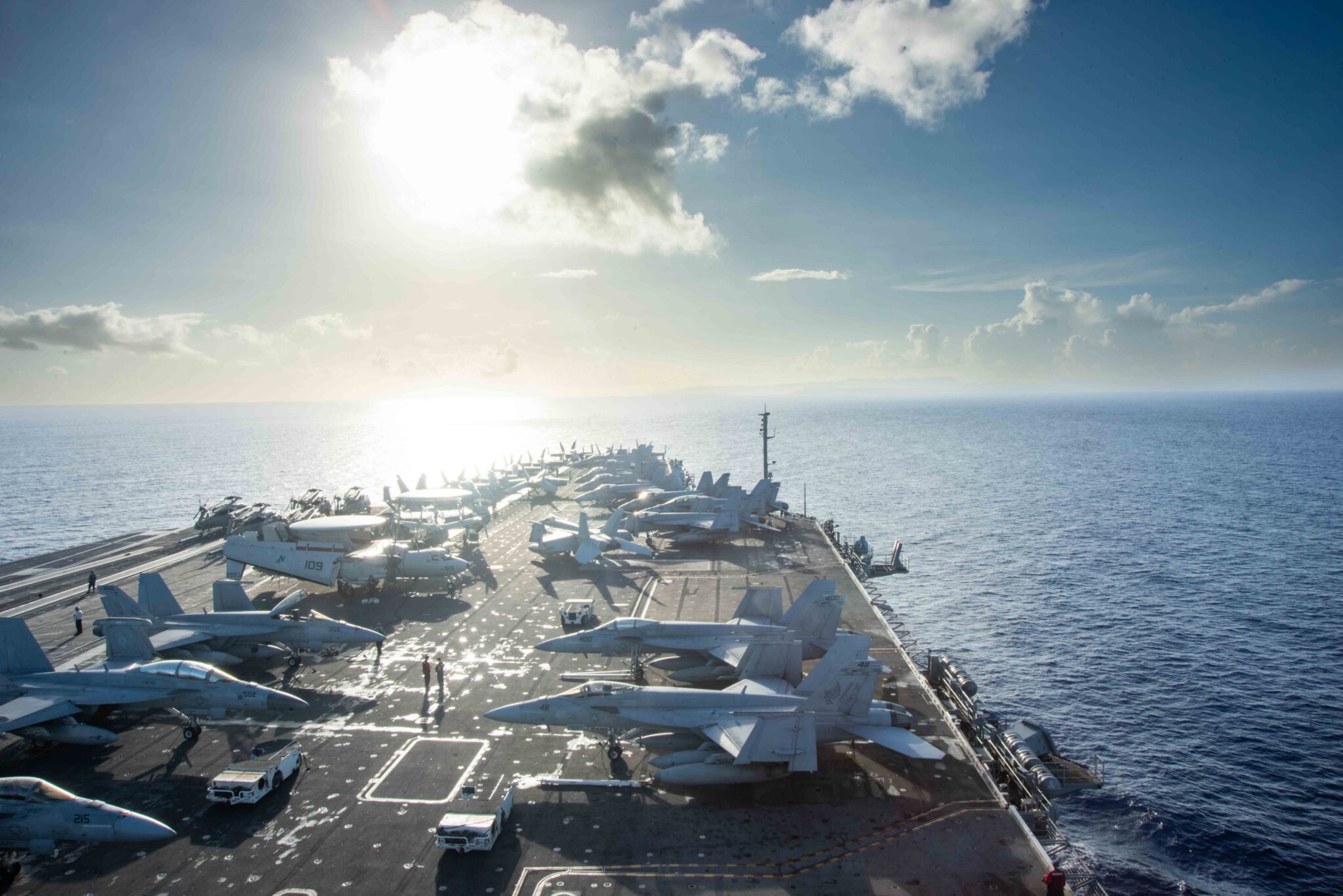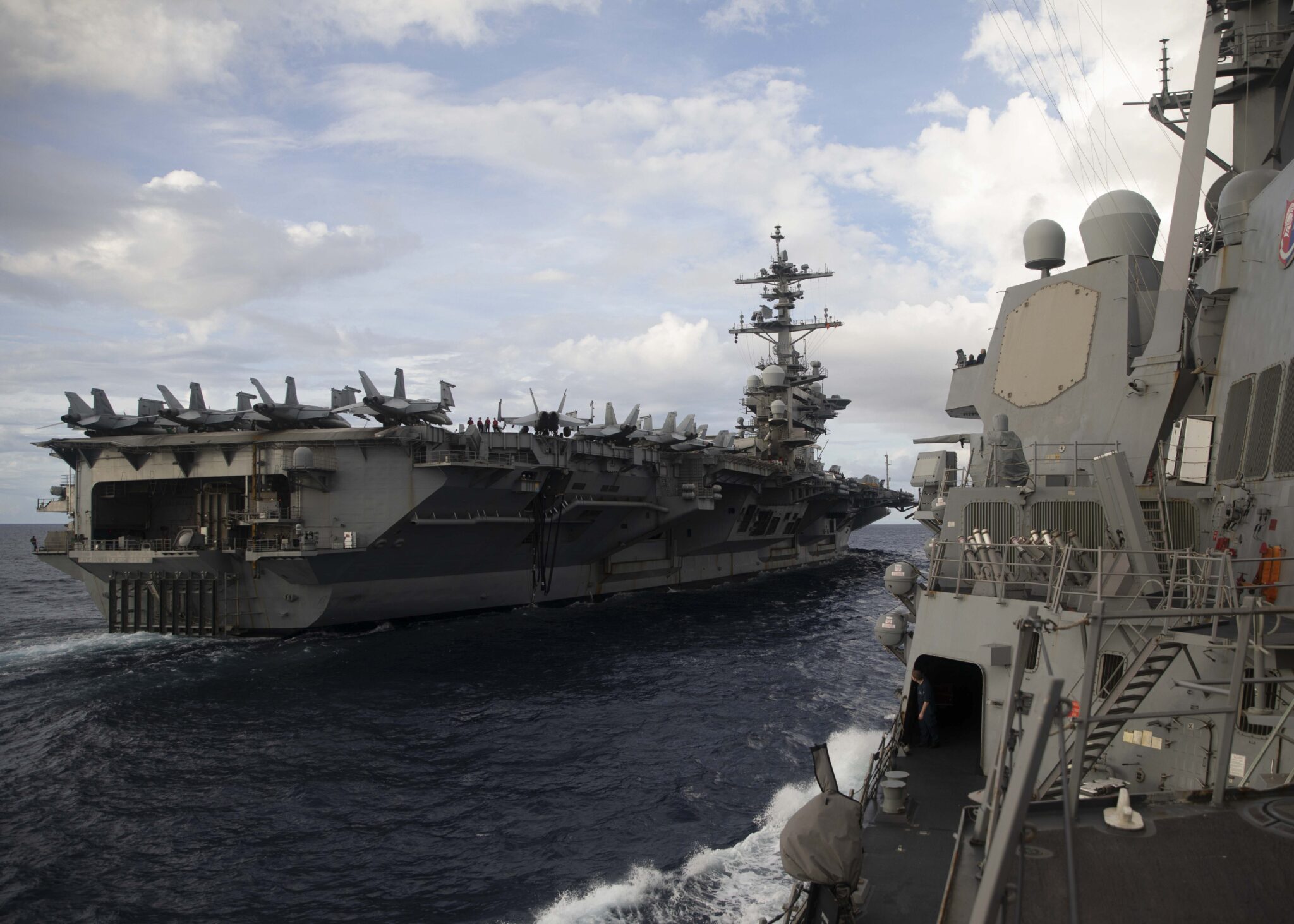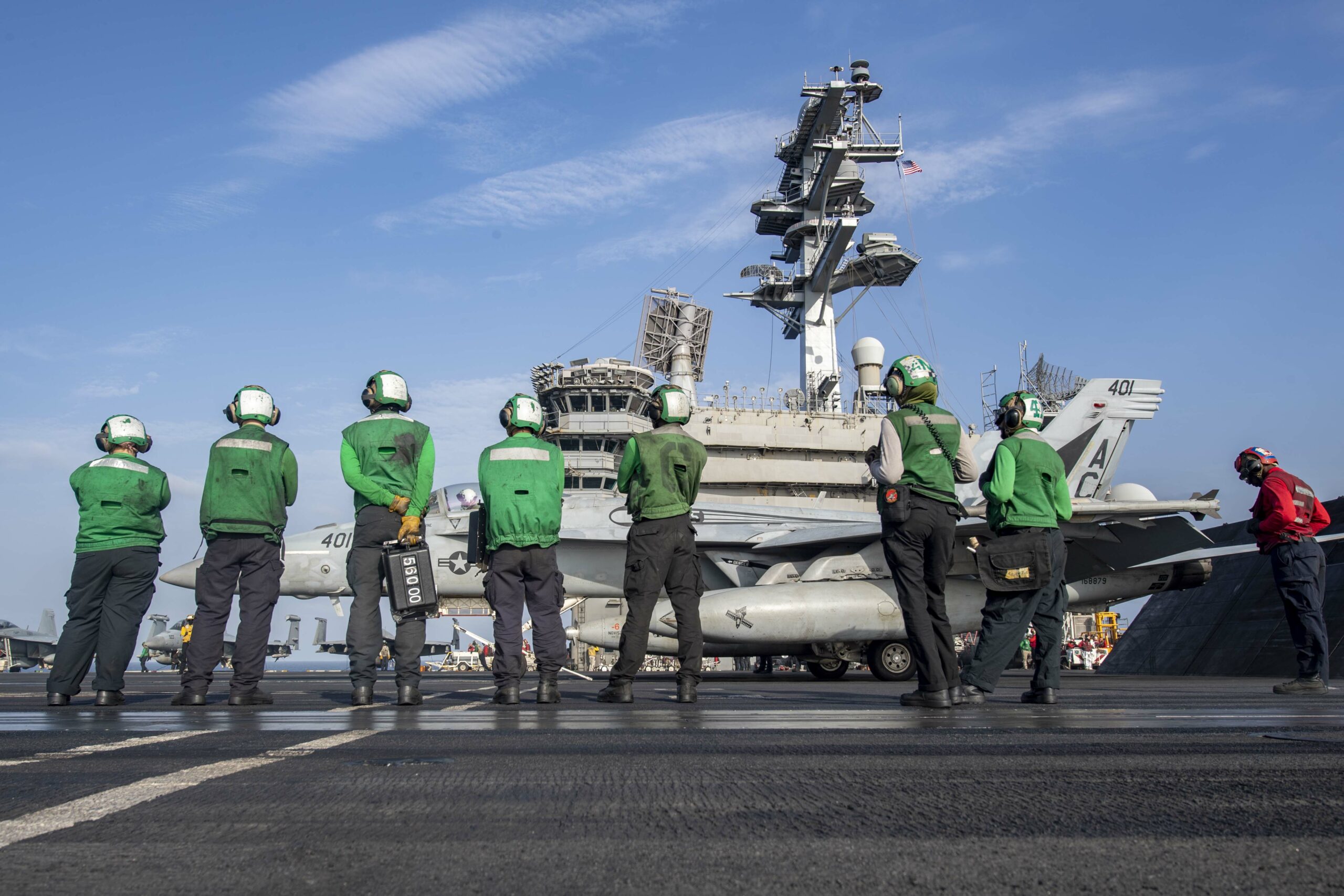newsROOM
- All
- Congressional Tours
- Ford Class
- Industry News
- Legislative Priorities
- Our Impact
- Resources
- Supplier Stories
Industry News
Valiant Shield Exercise
USS Ronald Reagan (CVN 76) participated in exercise Valiant Shield 2024, a multinational, joint field training exercise focused on integration between U.S. and allied forces ...
July 8, 2024
Learn More
Industry News
CVN 69 Deployment Update
USS Dwight D. Eisenhower (CVN 69) departed the Red Sea traveling to the U.S. European Command area of responsibility for a brief stop before heading ...
July 8, 2024
Learn More
Industry News
USS Theodore Roosevelt (CVN 71) in South Korea Ahead of Transit to Middle East
On June 22nd, USS Theodore Roosevelt (CVN 71) pulled into the South Korean city of Busan for a port visit before carrying out the trilateral ...
July 8, 2024
Learn More
Industry News
CVN 69 in the Red Sea
USS Dwight D. Eisenhower (CVN 69) is back in the Red Sea, marking nearly 7 months deployed – a true testament to the strength and durability of our ...
June 24, 2024
Learn More
Industry News
CVN 76 Leaves Japan
USS Ronald Reagan (CVN 76), a flagship aircraft carrier of the U.S. Navy, recently departed from its homeport in Japan after nearly nine years of deployment in the Indo-Pacific ...
June 24, 2024
Learn More
Sign Up For Our Email List
Stay up to date with ACIBC and industry news by signing up to receive our email alerts.
Menu
Menu
Menu
Menu
Menu
Menu





